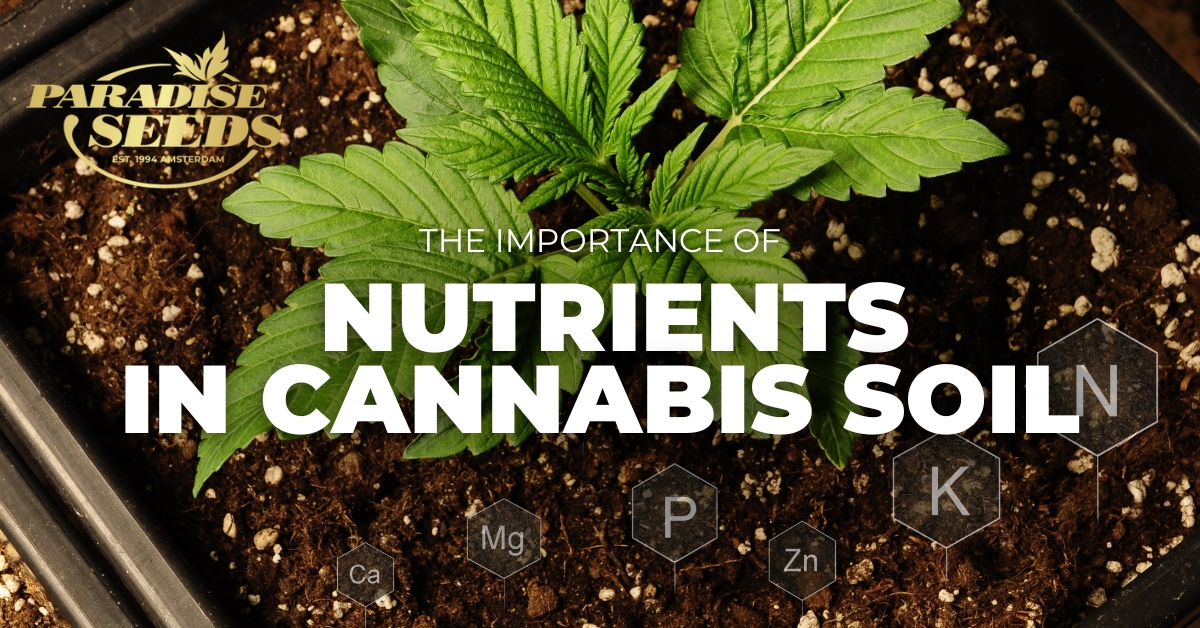To ensure healthy and high-yielding cannabis plants, providing the proper proportion of nutrients at each stage of the growing process is crucial. The essential nutrients in cannabis soil growing are Nitrogen (N), Phosphorus (P), and Potassium (K), also known as Primary Macronutrients due to their important role. This article takes a look at the role of nutrients in cannabis growing.
Contents
While the correct application of NPK nutrients is crucial for the plant’s development and yield, other factors must be considered for successful cultivation. Let’s start by highlighting the importance of NPK nutrients.
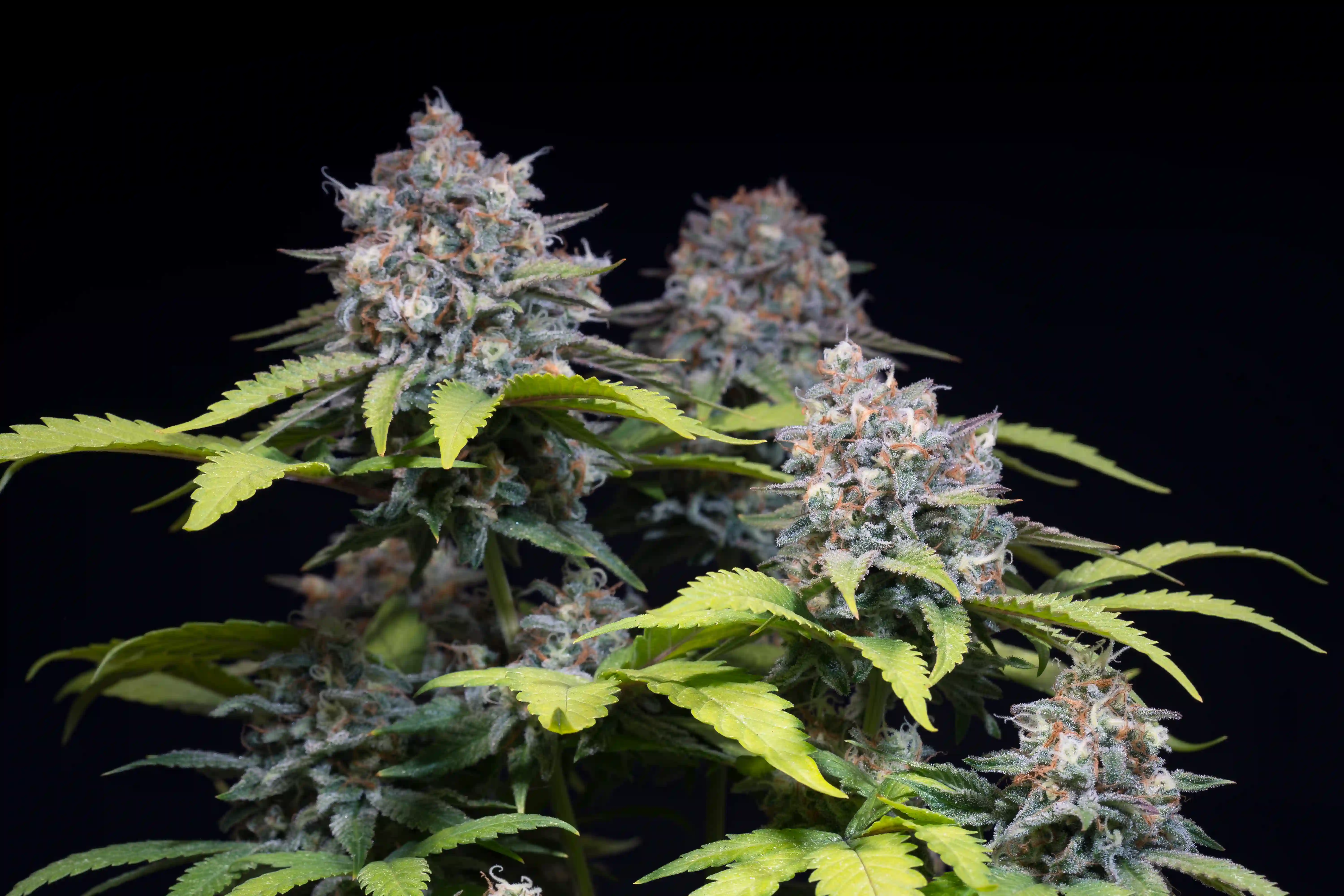
Nutrients in cannabis soil – Primary macronutrients
Let’s examine why NPK is the primary nutrient for cannabis plants by exploring their functions in plants. For cultivators growing traditionally, this is a basic combination of cannabis nutrients in soil use.
Nitrogen (N)
Plants need nitrogen in the form of nitrate the most during their vegetative phase. Nitrogen is crucial for growth, development of foliage, protein synthesis, and energy metabolism.
However, it is essential to be careful while applying nitrogen during the flowering stage, as excess nitrogen can slow down the development of buds.
Nitrogen issues
When there is a lack of nitrogen, plants lose their vigor and color, growth slows down, the older lower leaves start turning yellow, and eventually, they drop off.

Phosphorus (P)
Phosphorus is an essential element for plants as it helps stimulate root development, energy transport, and storage. In terms of nutrients in cannabis soil, it plays a crucial role in maintaining the plant’s overall health and is necessary for the proper functioning of photosynthesis and the formation of organic compounds.
During flowering, phosphorus is particularly important as it helps in the growth of flowers and fruits.
Phosphorus issues
If there is a deficiency of phosphorus, the leaves may turn brown, and the flowering may be delayed and incomplete. Therefore, it is vital to ensure that plants receive an adequate amount of phosphorus for optimal growth and development.

Potassium (K)
Potassium plays a central role in regulating water and transporting reserve substances in plants. It also helps with photosynthesis and strengthens the plant’s cell tissues. It is essential for stimulating flowering and boosting plants’ resistance against adverse weather conditions and infections through synthesizing carbohydrates and enzymes.
Potassium issues
Dark spots on the leaves are typically a sign of potassium deficiency. Without enough potassium, the plant loses its vigor and becomes susceptible to environmental stress and fungal attacks, while excessive potassium can cause toxicity issues.

Other macronutrients beyond the NPK triad
Secondary macronutrients are essential elements for plant growth, just like nitrogen, phosphorus, and potassium. However, they are required in smaller quantities.
Calcium (Ca)
Calcium is one such nutrient that plays a vital role in various plant processes. It helps in cell growth and makes the cell wall more stable.
It supports root development and growth and assists the plant in absorbing and retaining minerals from the soil. Additionally, it aids in removing toxic substances and supports seed formation.
Calcium issues:
If there is a deficiency of calcium, the leaves may develop yellow or brown spots, and the plant growth may be stunted.

Magnesium (Mg)
Magnesium is one of the essential nutrients forcannabis soil as it plays a crucial role in absorbing and transporting other nutrients. It is necessary for the proper functioning of plant proteins, including some enzymes involved in photosynthesis, and is a critical component of chlorophyll, the green pigment found in plant cells.
Chlorophyll needs magnesium to carry out photosynthesis successfully, which is vital for plants to produce glucose.
Magnesium is also essential for activating key enzymes and helps in the absorption and transport of phosphorus. If a plant lacks magnesium, it will be less efficient in converting sunlight into energy.
Magnesium issues:
The stems of the plant become weaker, and the older leaves turn yellowish-brown. Over-applying potassium can prevent the uptake of magnesium from the soil, leading to magnesium deficiency. Avoiding excess magnesium is essential, as it can cause competition between ions and lead to relative calcium deficiency.
Sulfur (S)
Sulfur helps chlorophyll formation and is, therefore, necessary for photosynthesis. It plays a role in maintaining growth functions, including nitrogen metabolism, enzyme activity, protein synthesis, and tissue formation. In the case of sulfur deficiency, the plant becomes lighter in color, and the young, upper leaves turn yellow.
Micronutrients and Macronutrients in summary
As diseases caused by micronutrient deficiencies in cannabis are relatively rare, it is not worth going into a lengthy analysis of them. Without being exhaustive, the following micronutrients should be monitored: boron (B), chlorine (CL), copper (Cu), iron (FE), manganese (Mn), molybdenum (Mo), zinc (Zn)
Macronutrients and micronutrients can be delivered in various ways. Along with irrigation, nutrient mixtures can provide the necessary trace elements and ions in the right proportions for every cultivation stage.
You can also opt for a premixed medium containing these elements or slow-release powders. However, it is crucial to be cautious when dosing, as excessive amounts may result in the retention of unwanted elements.
A full guide to nutrient problems and how to solve them is available here.
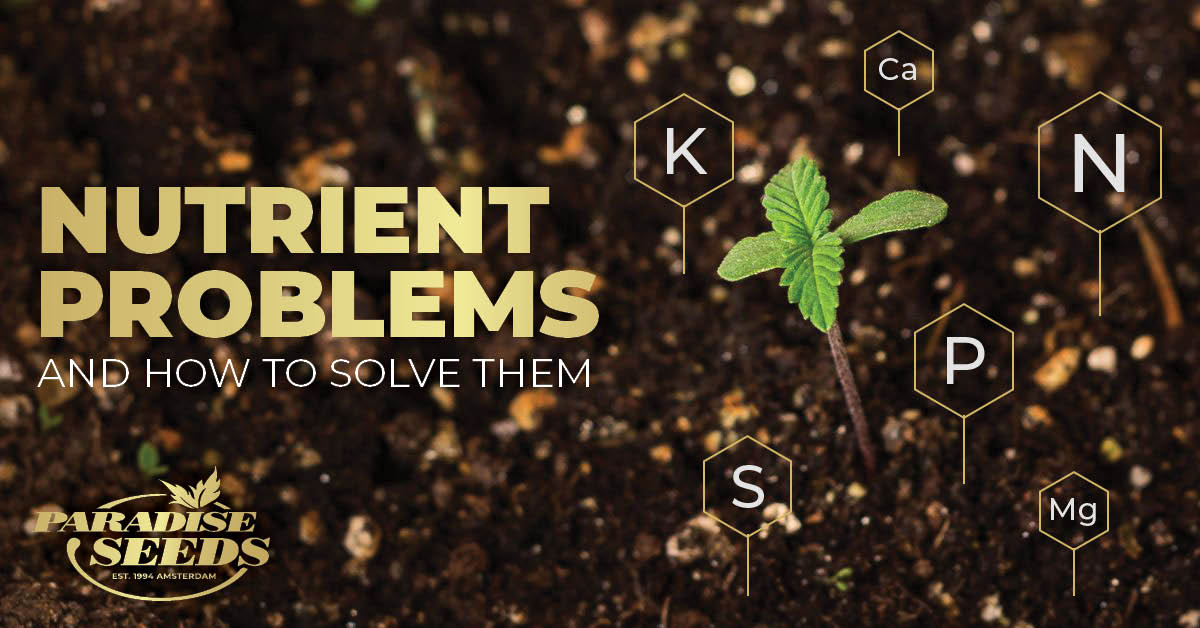
Understanding NPK ratios
The packaging of NPK nutrient solutions provides information about the proportion of each nutrient in the product. For example, classic NPK (nitrogen, phosphorus, potassium) products usually display the ratio as “NPK 9-4-5”.
This indicates that the NPK nutrient solution contains 9% available nitrogen, 4% phosphorus, and 5% potassium by weight. Different stages of plant development require varying proportions of these nutrients, so the products must be applied accordingly.
How often should you feed your plants?
For the best plant health and growth, avoiding using liquid nutrients every time you water your plants is recommended. Instead, you should use them every other time, based on the soil’s complexity and your plants’ condition.
If you’re using a standard potting mix, fertilizing your plants once a week should be enough. However, if you want to feed your plants more frequently, you should use a lower rate of base nutrients, as it will be applied more often.
Most fertilizer brands provide instructions to help you determine the correct ratio of feed to water. Over-fertilizing can be harmful, so it’s crucial to be cautious. It’s advisable to create a feeding schedule that outlines when to water your plants with nutrients and the levels of nutrients required at each watering.
Why good soil is vital for healthy cannabis plant growth
The significance of soil for cannabis cultivation is paramount, influencing plant health, yield, and potency. Soil serves as a reservoir for nutrients, essential for robust growth and development, ensuring the plant’s vitality. A balanced soil composition regulates water retention, preventing both dehydration and waterlogging, crucial for optimal cannabis growth.
Moreover, soil harbors a diverse microbiome, fostering symbiotic relationships with cannabis roots, aiding in nutrient uptake and disease resistance. Organic soil promotes sustainability and flavor profile enhancement, crucial for discerning consumers. Thus, soil quality directly correlates with cannabis quality, emphasizing its pivotal role in ensuring successful cultivation and yielding high-quality, potent cannabis products.
There are plenty of ready mix soils on the market, providing essential nutrients to support early stage growth. Many growers, especially those growing outdoors, prefer to make their own soil mix.
When to start giving nutrition to your plants?
Once you have germinated your cannabis seeds, they do not need any additional cannabis nutrients in soil mixes. The seedlings can obtain all the necessary nutrients from the seeds until they are about 3-4 weeks old and have already produced a few leaves.
This indicates the start of the vegetative phase and this is when you can begin to introduce NPK nutrients to support healthy growth.
Nutrition in the vegetative stage
Cannabis plants require high nitrogen levels during their vegetative growth phase. Nitrogen regulates protein production and is responsible for the growth of leaves and stems, which determines the plant’s overall size and strength.
Therefore, providing sufficient nutrients during the vegetative stage is essential to ensure healthy plant growth. Fertilizers with “Grow” in their name usually contain high levels of nitrogen and a lower percentage of phosphorus and potassium, such as NPK 18-4-5.
During the first week of the vegetative phase, you can introduce the seedlings to fertilizer through light fertilization, with NPK 2-1-2 being a common choice for this purpose. Some growers prefer this method, while others opt for higher nitrogen fertilizer, like 9-4-5, right from the start for better growth results.
As your plants grow and reach the mid-vegetative phase, usually around 6 weeks after germination, increasing their nutrient intake is recommended to promote healthy foliage growth. During this stage, most growers prefer to use a 10-5-7 fertilizer that contains increased levels of nitrogen. This will help produce lush, green foliage and encourage bud site development for flowering.
As you approach the end of the vegetative phase, it’s suggested that you gradually reduce the nitrogen levels and switch to a mixture of equal proportions to prepare your plants for the flowering stage.
Nutrition in the flowering stage
When a cannabis plant reaches the flowering stage, it devotes its energy to producing buds. During this phase, the plant needs more phosphorus and potassium.
To address this requirement, fertilizers are formulated for the flowering stage, containing less nitrogen and more phosphorus and potassium. These fertilizers are commonly referred to as “bloom” nutrients, such as NPK 5-9-9 or 5-7-10.
As flowering progresses, many growers increase nutrient concentrations across the board while keeping potassium levels higher than other nutrients. By mid-flowering, a 6-10-15 nutrient solution is often used.
During the last few weeks of the flowering stage, reducing the amount of nutrients given to the plant is recommended. For example, this can be achieved by using an NPK ratio of 4-7-10. This helps to prevent any excess nutrients in the flowers prior to harvesting.
In the final week leading up to harvest, it is vital to flush the plants by giving them only water. This helps to remove any nutrient buildup in the buds, which can improve the quality of the final product.
Moreover, biostimulants and micronutrient supplements may be used during the flowering stage to improve the absorption of fertilizers by the plant. This can result in more compact buds with a better taste and an increase in the production of terpenes and cannabinoids.
Why checking your water pH levels is crucial?
We have discussed the importance of using the correct nutrient mix during each growing cycle to achieve the desired results. However, it’s also necessary to note that even if you use the proper nutrients, applying them to water with the wrong pH can ruin all your efforts.
For cannabis plants grown in soil, the ideal pH level for water should fall between 6.0 and 7.0. You can quickly determine the pH level of water by using a pH test kit or pH meter. If the pH level goes beyond this range, it can cause a nutrient lockout, meaning that your plants will be unable to absorb the nutrients they need.
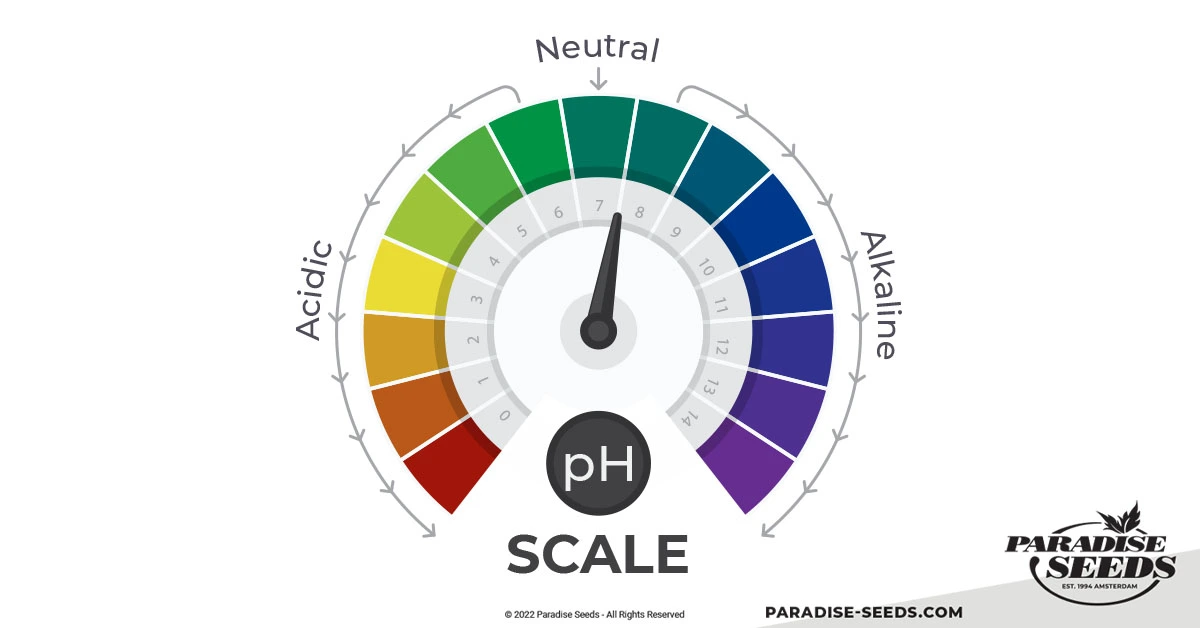
Therefore, it’s essential to test your water regularly and ensure that the nutrient mix you give your plants falls within the desired pH range. This also applies to cannabis nutrients in soil and pH levels in outdoor plants.
Deciding between organic and synthetic nutrients
Before planting the seeds, you must decide whether to use organic or synthetic nutrients. This decision will require different approaches and yield different results.
For instance, you can use synthetic nutrients to supplement organic nutrients during flowering, but not the other way around. Let’s take a closer look at the specifics!
Synthetic nutrients
Synthetic nutrients have been available on the market for a long time, and there are millions of experiences to back up their benefits. They can be accurately dosed like other laboratory preparations, and their active ingredient content of macro and micronutrients can be determined to the nearest milligram.
These nutrients dissolve in water, and plants can quickly absorb them. This means that the first signs of a deficiency disease can be remedied quickly. With synthetic nutrients, you may see changes in your plants just days after feeding them, while with organic nutrients, this may take 1-2 weeks.
While cannabis plants grown using organic nutrients tend to have more intricate flavors, synthetic fertilizers are considered superior to organic nutrients in terms of yield size and bud structure.
Cannabis plants fed with synthetic nutrients usually produce denser and more resinous flowers, making synthetic fertilizers a popular option for growers who prioritize bigger yields.
It is worth noting that while plant preparations can be highly beneficial, they can also be harmful if overused. This can lead to plant burn, so you should use such preparations cautiously.
Additionally, you should remember that synthetic nutrients are not beneficial for the soil in the long run. If you plan on continuous cultivation, you should take this into consideration.
Organic nutrients
High-quality organic nutrients are now widely available to support all growing methods. It is worth considering how to apply them and what to expect from the types recommended for each stage of cultivation.
These nutrients are derived from natural sources like animal waste and rock dust. They contain varying concentrations of macro and micronutrients. Organic fertilizers are forgiving and beneficial for soil organisms.
Additionally, many organic fertilizers contain beneficial microorganisms, such as bacteria and fungi. These microorganisms help to break down nutrients to make them readily available to plants and promote healthy root growth. They also protect your plants against pathogens and pests.
Organic nutrients have lower concentrations of macro and micronutrients, so growers need to feed their plants more frequently. However, this also means it’s harder to overfeed your plants.
Organic fertilizers are advantageous because they gradually feed plants over an extended period. This allows growers to reuse their soil after each growth cycle, leading to significant savings, especially for those who produce multiple harvests per year.
Key organic fertilizer options include worm castings for nitrogen, bone meal for phosphorus, wood ash for potassium, and dolomite lime for calcium and magnesium.
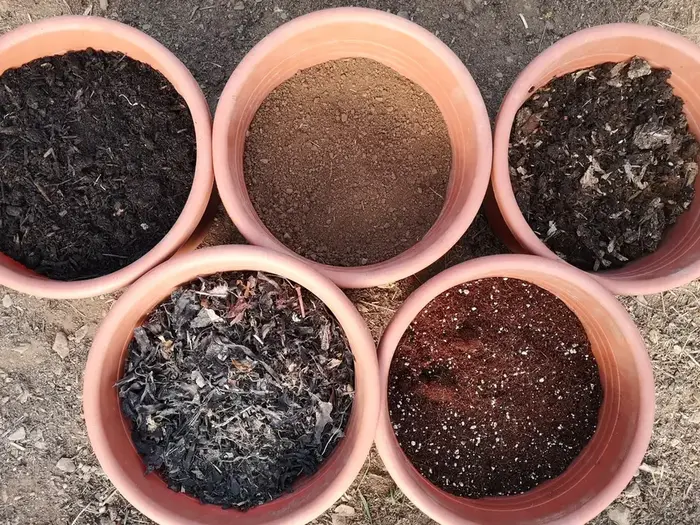
Most growers agree that organically grown cannabis develops more complex and intense aromas than synthetically grown cannabis. Additionally, many organic growers find that a plant flush prior to harvest is unnecessary since plants take up what they need from the substrate, leaving the rest behind.
Organic fertilizers are a sustainable option for enriching soil. However, nutrient deficiencies may take longer to address because plants absorb them more slowly. Nutrient breakdown relies on microorganisms, which can be slower in colder climates. This also means organic growers may face challenges when dealing with emerging diseases and infections.
Pros and Cons of synthetic and organic fertilizers
| Organic Fertilizers | Synthetic Fertilizers | |
| Pros | Derived from natural sources, beneficial for both plants and soil.Stimulates soil microorganisms, improving soil structure.Provides secondary and micronutrients often lacking in synthetics.Offers longer lasting effects.Its application provides more complex and intense aromas. | Tried and tested by millions.Active substance content is precisely defined.Quickly absorbed by plants, providing rapid effects.Ideal for treating diseases quickly.Its application provides denser and more resinous flowers. |
| Cons | Contains lower levers of NPK.Results are subtler, taking longer to manifest.Not ideal for treating diseases quickly. | Results are short-lived, requiring regular reapplication.Lacks benefits for soil health and long-term fertility.Risk of burning plants if overapplied. |
Conclusion
To grow cannabis plants successfully, monitoring the nutrients they receive closely is crucial. Before starting the growing process, it is essential to learn about the nutrients that cannabis plants require at each stage of their development.
This will allow you to plan and provide appropriate support accordingly. Creating a nutrient management schedule can help you maintain control over the entire process.
One way to manage nutrients carefully is to start with a lower dosage of solution than recommended and gradually increase it until the plants respond optimally. Both underfeeding and overfeeding can harm the plants, so it’s crucial to maintain a balance while providing the necessary amount of nutrients.
You also need to decide whether you will use organic or synthetic nutrients. Both have advantages and disadvantages, which you need to weigh according to your own goals and expectations. Assessing these details beforehand will help you make the right choices when it comes to supporting your crop with the necessary nutrients.



